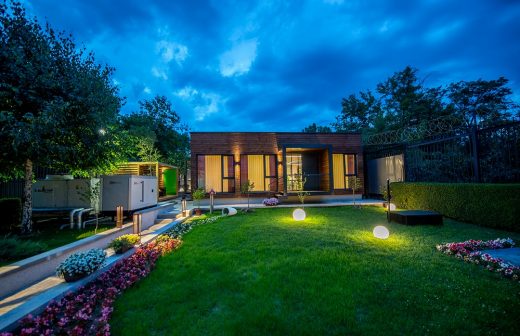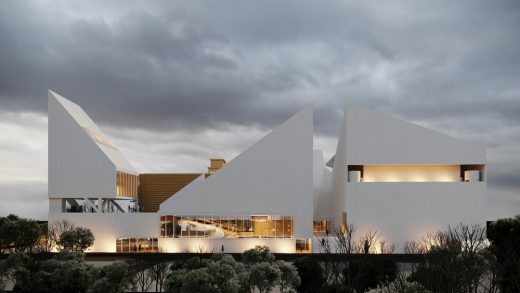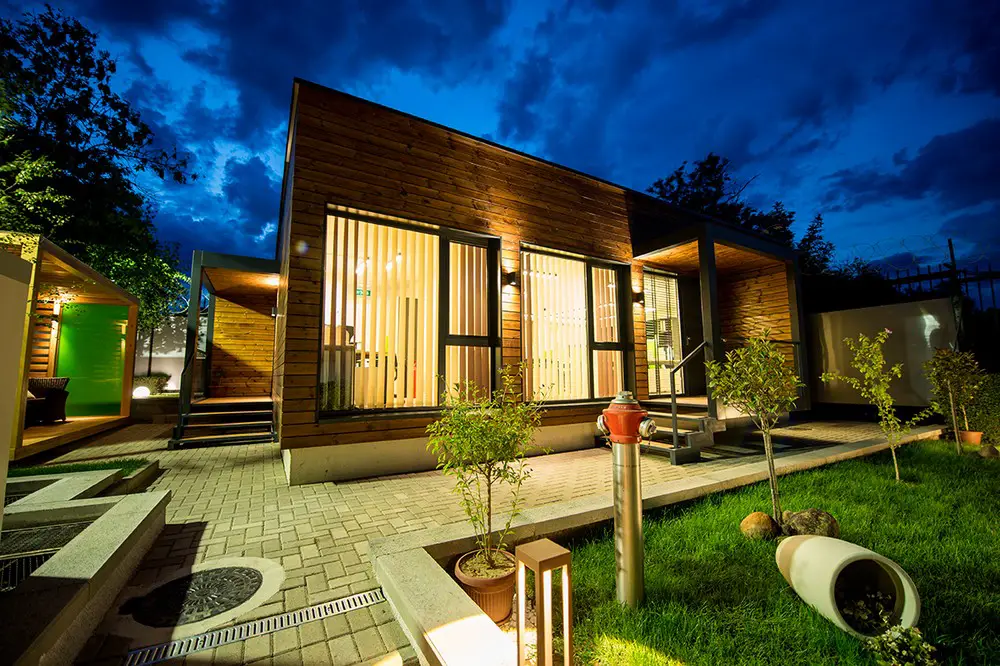Republic of Kosovo Developments, Pristina Building Project News, Design Architects Property
Development in Kosovo, southeast Europe
Architectural Developments Links + Built Environment Designs
post updated 29 March 2024
Contemporary Kosovan Architectural Selection
Kosovo Developments
Central City Square of Rahovec Design Competition
Central Mosque of Prishtina Building
Central Mosque of Prishtina Competition Entry
Central Mosque of Prishtina Design
German Embassy in Pristina – Kosovo Building
Prishtina Central Mosque Competition
We aim to add more buildings in this southeast Europe country soon – submissions are welcome.
Location: Republic of Kosovo
New Southeastern Europe Architecture
Contemporary Southeastern Europe Architectural Selection
Bosnia and Herzegovina Buildings
This index page is for architectural projects in this Southeast European country on the e-architect website.
German Embassy in Pristina – Kosovo building designed by Ferizi + Ferizi Architects:

image courtesy of architects office
Kosovo
This country sometimes referred to as Kosovo and Metohija, is a region in southeastern Europe. In antiquity, the Dardanian kingdom, and later Roman province of Dardania was located in the region. It was part of Serbia in the Middle Ages, during which time many important Serbian Orthodox Christian monasteries, some of which are now UNESCO World Heritage sites, were built.
Many consider the Battle of Kosovo of 1389 to be a defining moment in Serbian medieval history and identity. In the 15th century, the region was conquered by the Muslim Ottoman Empire and remained under Ottoman rule for almost five centuries.
Kosovo again found itself within the Serbian state when it was incorporated into the Kingdom of Serbia as a result of Ottoman defeat in the First Balkan War (1912–13). After a period of Yugoslav unitarianism in the Kingdom of Yugoslavia, the post-World War II Yugoslav constitution established the Autonomous Province of Kosovo and Metohija within the Yugoslav constituent republic of Serbia.
Long-term severe ethnic tensions between Kosovo’s Albanian and Serb populations have left Kosovo ethnically divided, resulting in inter-ethnic violence, including the Kosovo War of 1999. The war ended with the Federal Republic of Yugoslavia accepting that it would give up the exercise of its sovereignty pending a final status settlement. Governance passed to the United Nations in 1999.
In 2008, the Republic of Kosovo declared itself an independent state. It has control over most of the territory and has partial international recognition. North Kosovo, the largest Serb enclave, is administered locally with parallel structures which observe the institutions of the Republic of Serbia. Serbia does not recognise the secession of Kosovo and considers it a UN-governed entity within its sovereign territory, a position supported by a number of other countries.
Source: wikipedia
Pristina Gërmia Concerts Hall building designed by Pacarizi Studio + Arber Sadiki architects, posted in 2021:

image courtesy of architects practice
The Pristina Gërmia Concerts Hall project restores and conserves ’70 Gërmia building into Contemporary Arts Center and proposes a new aggregation of freestanding volumes for the Great Concert Hall, the Black Box Concert Hall, Small Auditorium, an Open Air theatre and all the necessary secondary spaces.
Comments / photos for the Kosovo Architecture Information page welcome

